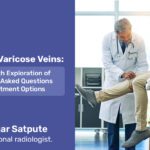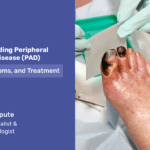Mobile
+91 8369559053
drsagputelimbandvesselcare@gmail.com
The Importance of Exercise and Yoga in Managing Varicose Veins

Table of Contents
What is varicose veins?
Varicose veins are a common condition in which the veins in the legs become swollen, twisted, and sometimes visible beneath the skin. These veins often appear blue or purple and can cause pain, discomfort, and aching. While surgery is a common treatment option for varicose veins, there are also non-invasive ways to manage the condition, such as exercise and yoga.
How to manage varicose veins in the early stages?
Exercise and yoga are excellent ways to manage the symptoms of varicose veins at the early stages, making them a popular form of varicose veins treatment. Regular exercise can help improve circulation, reduce pressure in the veins, and prevent blood from pooling in the legs. Additionally, yoga is beneficial for improving flexibility, reducing stress, and promoting relaxation, all of which can help alleviate symptoms associated with varicose veins and act as varicose veins treatment.
Exercises to prevent varicose veins:
Calf raises
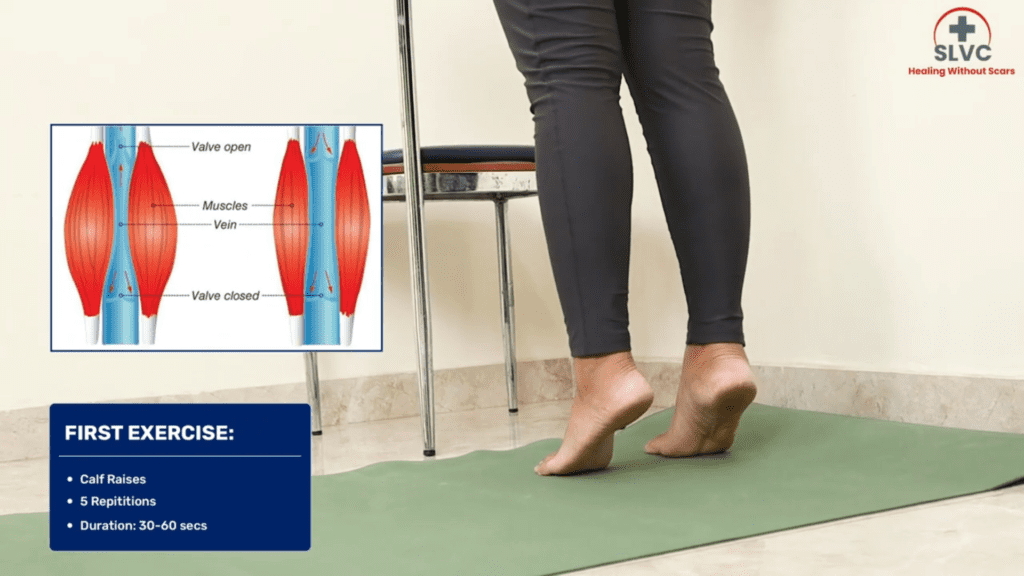
One simple exercise that can be really helpful for people suffering from varicose veins is the calf raise. This exercise targets the muscles in the calves and can be performed with or without weights.
To perform a calf raise, stand with your feet shoulder-width apart and toes pointing forward. Slowly lift yourself up on your toes, lifting your heels off the ground as high as you can, and hold the position for a few seconds before lowering your heels back down.
Start with a small number of repetitions and gradually increase as your strength improves.
Leg and calf muscle exercises:
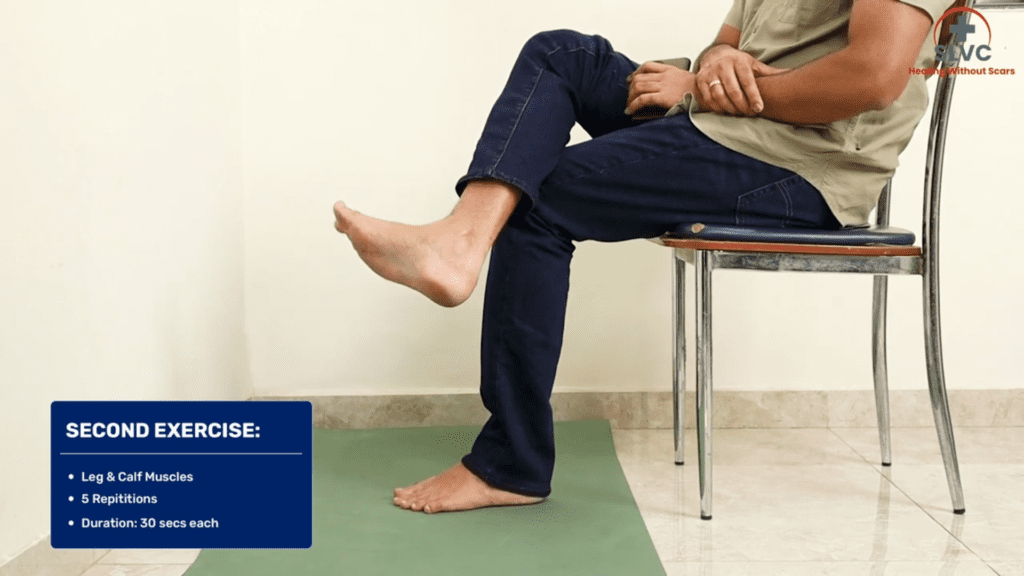
Another simple exercise for varicose veins is for the leg and calf muscles. To perform this exercise you’ll have to sit on a chair and have to raise your foot in up and down motion focusing on the ankle joint.
Perform five repetitions of this exercise, 30 seconds each. While performing this exercise you can take rests/breaks in between repetitions for 10 secs and continue to perform the up-down motion.
Simple Yoga Asanas for Curing Varicose Veins:
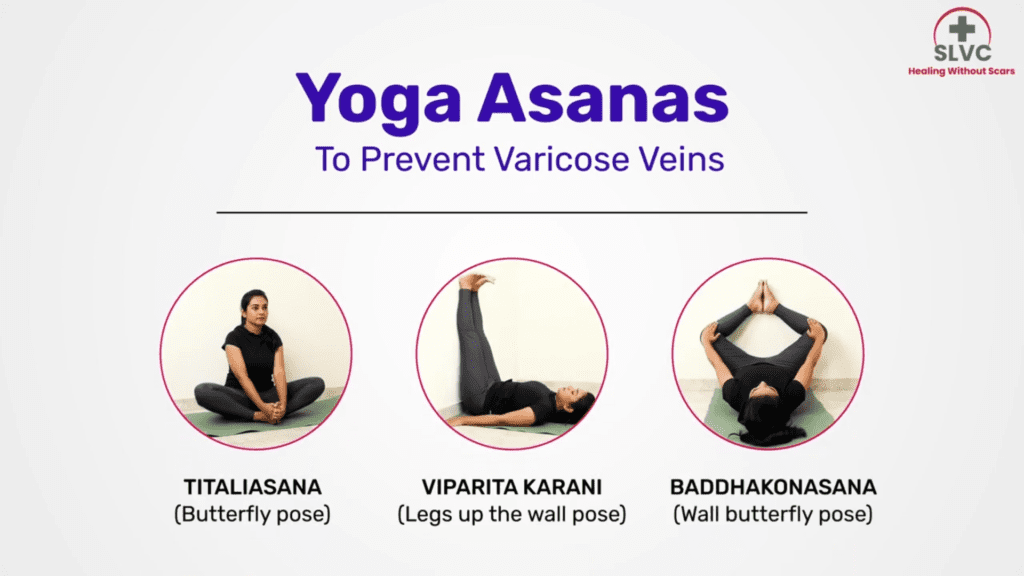
Certain yoga poses can improve blood circulation, stretch and strengthen the muscles, and relieve pressure on the veins. Some recommended yoga poses for varicose veins include Titaliasana(Butterfly Pose), Viparita Karani(Leg Up the Wall Pose), and Baddha Konasana(Wall Butterfly Pose). These poses can help improve blood flow and reduce swelling in the legs, which can alleviate discomfort and pain.
Titaliasana(Butterfly Pose)
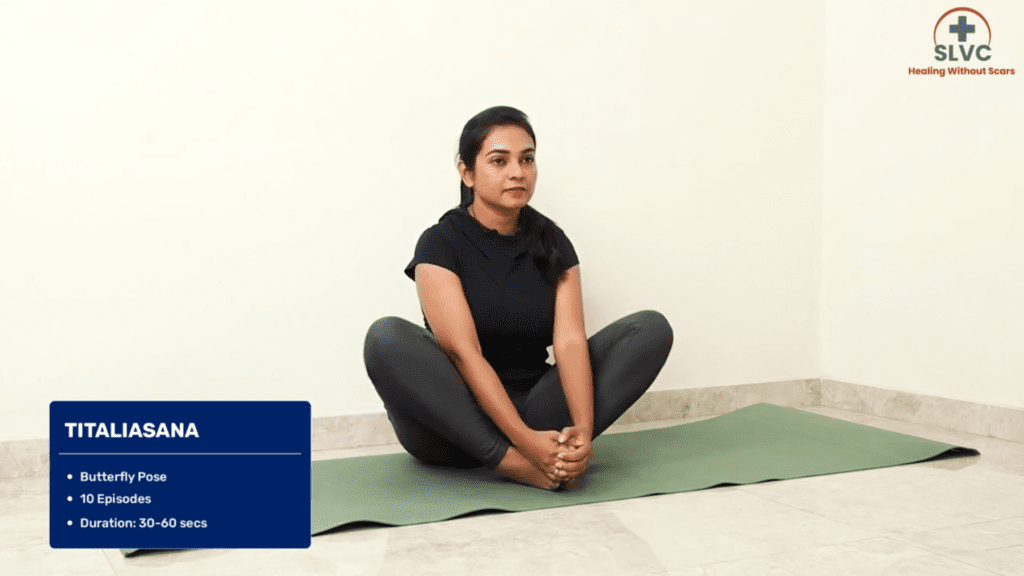
Titaliasana, also known as Butterfly pose or Baddha Konasana, is a yoga exercise that stretches the inner thighs, groins, and knees.
To perform Titaliasana, start by sitting on the floor with your legs extended in front of you. Bend your knees and bring the soles of your feet together, letting your knees fall open to the sides. Use your hands to hold onto your feet or ankles and sit up tall, lengthening your spine. Gently press your knees down towards the floor while keeping your feet together.
Viparita Karani(Leg Up the Wall Pose)

Viparita Karani, also known as the Legs up the wall pose, is another yoga pose that can help manage varicose veins and act as varicose veins treatment.
Lie on your back with your legs straight up against the wall and hold the pose for several minutes. Move your ankles up and down for 20 seconds to further stimulate circulation.
Baddha Konasana(Wall Butterfly Pose)

Baddha Konasana, also known as Bound Angle Pose or Butterfly Pose, is another yoga pose that can help manage varicose veins and act as varicose veins treatment. This pose stretches the inner thighs, groins, and knees while stimulating the abdominal organs and improving digestion.
To perform Baddha Konasana, begin by sitting on the floor with your legs extended in front of you. Bend your knees and bring the soles of your feet together, allowing your knees to drop out to the sides. Clasp your hands around your feet, interlacing your fingers. Sit tall and engage your abdominal muscles, drawing your navel towards your spine. Gently press your knees towards the floor, using your elbows to press down on your inner thighs.
While exercise and yoga can help manage varicose veins, it’s essential to remember that they may not completely cure the condition. It’s important to consult with a Interventional Radiologist to determine the best treatment plan for your individual needs. In addition to exercise and yoga, there are other lifestyle changes that can help manage varicose veins, such as maintaining a healthy weight, avoiding standing or sitting for long periods, and wearing compression stockings.
Note : Patients with age more than 60, or with medical conditions like Asthma, Heart disease, or any Chronic disease should do these exercises only after consultation with a Doctor.
Take Away
In conclusion, varicose veins are a common condition that can be managed effectively without surgery through regular exercise, yoga, and lifestyle changes. These non-invasive methods can help alleviate symptoms and promote circulation, ultimately leading to a healthier, more active lifestyle. If Symptoms do not get relieved after Excercise or Yoga Kindly Consult Interventional Radiologist practicing nearby.
Consulting with a Interventional Radiologist can help you determine the best course of action for your individual needs and ensure that you receive the appropriate treatment for your varicose veins.
Latest Blogs
Understanding DVT: How Blood Clots Can Lead to Serious Consequences
February 24, 2024




